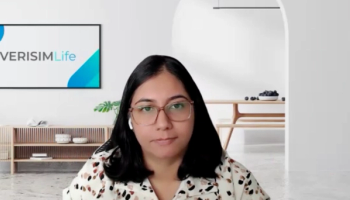
Uncertainty Regarding Asthma Inhaler Training, Other Barriers Observed Among Health Care Professionals
These new findings may help shape both the design and the use of an educational intervention on technology-based inhaler techniques for patients with pediatric asthma.
This article was originally published in
The negative effects of hospital-based time pressures and the uncertainty of opinions on who should facilitate the correct form of
These results were the product of a new study exploring different types of barriers and facilitators viewed by both members of the asthma community and healthcare professionals as impactful to educational interventions for asthma.
The study’s investigators cite another recent study that had reported 86% of 150 pediatric asthma patients were shown to have not been correctly utilizing their metered dose inhaler, leading to an exploration of better solutions for interventions in education on inhaler techniques.2
This new study was led by Antonia O'Connor, MBBS, from the Respiratory and Sleep Department of the Women's and Children's Hospital in Adelaide, Australia.
“Results of this study will be used to guide the design and implementation of a technology-based inhaler technique educational intervention for the pediatric asthmatic population,” wrote O’Connor and colleagues of the study.
The investigators decided to use the theoretical domains framework (TDF) as their guiding principle, and this was designed to be the overall foundation for their conducting of semi-structured interviews, questionnaires, and their deductive thematic analysis.
The team’s investigation is an element of a larger research framework aimed at designing and assessing the use of a technology-based educational intervention for younger patients and their asthma inhaler use, with both smartphone and tablet devices incorporated.
The investigators examined 18 distinct domains from the TDF, and these covered aspects such as skills, knowledge, beliefs, social and professional roles, intentions, and several different other contextual factors. Their study took place at a tertiary pediatric hospital located in Australia, with purposive sampling aimed at 3 specific types of participants, including healthcare professionals with experience in education for asthma, children that have asthma, and these childrens' caregivers.
Their period for recruitment took place from July 2021 to April 2022, with the research team finally obtaining data saturation. The team’s criteria for participant inclusion was designed specifically for each group.
Their criteria for older children shifted midway through recruitment as a result of COVID-19 pandemic-related issues, and the adjustment was made carefully to improve their analysis’s depth for the chosen age group. The team’s criteria for exclusion was minimal, aimed at individuals’ ability to provide informed consent and proficiency in speaking English.
The investigators’ sample size was around 15 to 20, and this approach ensured triangulation of the new data through questionnaires and semi-structured interviews. The team’s questionnaires were based upon TDF domains, and their interviews were guided through the same framework and done by a qualified investigator.
Their interviews with participants explored their experiences and their knowledge with regard to asthma education, emphasizing inhaler techniques as well as technology-based educational resources. The investigators’ collection involved de-identification, audio recording, auto-transcription, and accuracy checks made afterward to ensure integrity.
Overall, the investigators ended up with a total of 16 participant interviews. They reported that, in general, healthcare providers expressed higher levels of concern with regard to obstacles in delivering asthma inhaler education compared to the recorded views of asthmatic children and their caregivers on receiving this education.
The research team also acknowledged that both healthcare professionals and caregivers noted that constraints on time were a hindrance to the delivery of comprehensive education in a hospital environment. That said, all of the participants viewed their asthma management skills and proficiency with inhalers confidently.
Additionally, the team found that introduction of technology-based solutions was shown to have favorable feedback from all of their participant groups as a means to improve asthma education.
“This information can be used to inform the design of future asthma educational interventions and presents the opportunity to improve secondary care, especially with the use of technological innovations,” wrote the researchers. “More research is however needed to identify the best modalities to achieve this.”
References
1. O'Connor, A, Tai, A, Brinn, M, Hoang, A, Cataldi, D, Carson-Chahhoud, K. Examining barriers and facilitators in asthma inhaler technique education and technology-enhanced educational tools in children: a mixed methods evaluation using the theoretical domains framework. Pediatr Pulmonol. 2023; 1-9. doi:10.1002/ppul.26630.
2. Almomani BA, Al-Qawasmeh BS, Al-Shatnawi SF, Awad S, Alzoubi SA. Predictors of proper inhaler technique and asthma control in pediatric patients with asthma. Pediatr Pulmonol. 2021; 56(5): 866-874.
Newsletter
Stay ahead of policy, cost, and value—subscribe to AJMC for expert insights at the intersection of clinical care and health economics.





























































